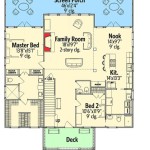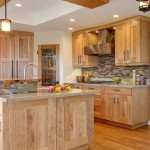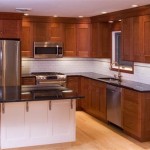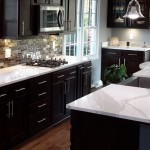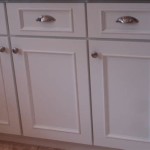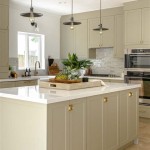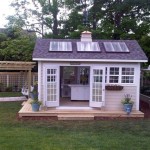Glass Panels For Kitchen Cabinets: A Comprehensive Guide
Kitchen cabinets are a crucial element of any kitchen design, influencing both functionality and aesthetics. While solid wood cabinets are a traditional and enduring choice, glass panels have emerged as a popular alternative, offering a distinct set of advantages and considerations. This article explores the various aspects of using glass panels in kitchen cabinets, encompassing styles, benefits, installation, maintenance, and design considerations, providing comprehensive information for homeowners and design professionals alike.
Types of Glass Panels for Kitchen Cabinets
The selection of a specific type of glass panel significantly impacts the overall look and feel of kitchen cabinets. Different glass types offer varying levels of transparency, texture, and decorative appeal. Understanding the available options is essential for making an informed decision aligned with the desired aesthetic and functional requirements.
Clear Glass: Clear glass panels offer maximum visibility, allowing a full view of the items stored inside the cabinet. This option is suitable for showcasing carefully curated collections of dishes, glassware, or decorative items. However, it also requires diligent organization and maintenance within the cabinet to maintain a visually appealing display. Imperfections or clutter will be readily visible through clear glass.
Frosted Glass: Frosted glass provides a degree of privacy by obscuring the view into the cabinet. This is achieved through a process that roughens the surface of the glass, scattering light and reducing transparency. Frosted glass is an excellent choice for masking the contents of cabinets, particularly those containing everyday kitchen essentials that may not be aesthetically pleasing when openly displayed. It offers a cleaner, more streamlined appearance without completely concealing the interior.
Seeded Glass: Seeded glass features small bubbles or imperfections embedded within the glass, creating a textured and slightly distorted view. This type of glass adds visual interest and a vintage or rustic charm to kitchen cabinets. The subtle distortion helps to conceal the contents of the cabinet while still allowing some light to pass through, creating a warm and inviting ambiance.
Leaded Glass: Leaded glass incorporates decorative metal strips, typically lead, to create intricate patterns and designs within the glass panel. This option offers a more ornate and traditional aesthetic, often used in formal or classic kitchen settings. Leaded glass can be customized with various colors and textures to complement the overall kitchen design. However, leaded glass cabinets can be more expensive than other options and may require specialized cleaning.
Art Glass: Art glass encompasses a wide range of decorative glass techniques, including stained glass, etched glass, and fused glass. These options allow for highly customized and artistic designs, making each cabinet unique and visually striking. Art glass is often used as a focal point in the kitchen, adding personality and character. Due to the intricate nature of art glass, these panels often come at a higher price point.
Laminated Glass: Laminated glass consists of two or more layers of glass bonded together with an interlayer of plastic. This construction provides enhanced safety, as the glass is less likely to shatter upon impact. If broken, the glass fragments tend to adhere to the interlayer, minimizing the risk of injury. Laminated glass can also offer improved sound insulation and UV protection.
Benefits of Using Glass Panels in Kitchen Cabinets
Glass panel kitchen cabinets offer numerous advantages that extend beyond aesthetics. From enhancing natural light to creating a sense of spaciousness, these cabinets can significantly improve the overall functionality and appeal of a kitchen.
Enhanced Natural Light: Glass panels allow natural light to penetrate deeper into the kitchen, creating a brighter and more inviting space. This is particularly beneficial in kitchens with limited natural light sources. The reflective properties of glass can further amplify the light, making the kitchen feel more open and airy.
Increased Visual Space: By providing a glimpse into the cabinet’s interior, glass panels can create an illusion of greater depth and spaciousness. This is especially effective in smaller kitchens, where every visual trick can help to make the room feel less cramped. The transparency of glass allows the eye to travel through the cabinet, extending the perceived boundaries of the space.
Display Opportunities: Glass panel cabinets provide an ideal platform for showcasing prized possessions, such as fine china, antique silverware, or decorative collections. This allows homeowners to personalize their kitchen and create a visually appealing display. The contents of the cabinets become part of the overall décor, adding personality and character to the space.
Modern and Stylish Appearance: Glass panel cabinets offer a contemporary and sophisticated aesthetic that can elevate the overall design of the kitchen. They can be incorporated into a variety of kitchen styles, from modern and minimalist to traditional and transitional. The sleek and clean lines of glass complement a wide range of color palettes and materials.
Easy to Clean: Glass panels are generally easy to clean and maintain. A simple wipe-down with a glass cleaner is usually sufficient to remove fingerprints, smudges, and dust. This ease of maintenance makes glass panel cabinets a practical choice for busy households.
Increased Cabinet Lighting Efficiency: When combined with internal cabinet lighting, glass panels enhance the visibility of the cabinet's contents. The light shines through the glass, illuminating the items inside and making them easier to locate. This can be particularly useful in cabinets located in darker areas of the kitchen.
Installation and Maintenance Considerations
Proper installation and regular maintenance are crucial for ensuring the longevity and optimal performance of glass panel kitchen cabinets. Addressing these factors proactively can prevent potential issues and preserve the aesthetic appeal of the cabinets for years to come.
Professional Installation: While some homeowners may attempt DIY installation, it is generally recommended to hire a professional cabinet installer for glass panel cabinets. Proper alignment and secure mounting are essential to prevent damage to the glass and ensure the doors function smoothly. A professional installer will have the necessary tools and expertise to handle the delicate nature of glass panels.
Frame Construction: The frame surrounding the glass panel plays a critical role in supporting the glass and preventing it from cracking or breaking. Choose frames made from durable materials, such as solid wood or metal, that can withstand the weight of the glass. The frame should also be properly sealed to prevent moisture from seeping into the glass edges.
Glass Thickness: The thickness of the glass panel should be appropriate for the size of the cabinet door. Thicker glass is generally more resistant to impact and less likely to break. Consult with a glass supplier or cabinet manufacturer to determine the appropriate glass thickness for your specific application.
Hardware Selection: The hardware used on glass panel cabinets should be chosen carefully to complement the overall design and provide smooth operation. Consider using soft-close hinges to prevent slamming, which can damage the glass. Select handles or knobs that are comfortable to grip and visually appealing.
Regular Cleaning: Regular cleaning is essential for maintaining the clarity and shine of glass panels. Use a mild glass cleaner and a soft cloth to remove fingerprints, smudges, and dust. Avoid using abrasive cleaners or scouring pads, as these can scratch the glass surface. For stubborn stains, try using a solution of vinegar and water.
Avoid Impact: Glass panels are susceptible to damage from impact. Avoid slamming cabinet doors or hitting the glass with hard objects. Exercise caution when handling items inside the cabinets to prevent accidental breakage. Consider adding bumpers to the inside of the cabinet doors to cushion them upon closing.
Inspect Regularly: Periodically inspect the glass panels for any signs of cracks, chips, or damage. Address any issues promptly to prevent them from worsening. Small cracks can often be repaired by a professional glass repair service. If the damage is extensive, the glass panel may need to be replaced.
By addressing these installation and maintenance considerations, homeowners can enjoy the beauty and functionality of glass panel kitchen cabinets for many years to come. Proper care and attention will help to preserve the clarity, durability, and overall aesthetic appeal of these stylish and versatile cabinets.
How To Style The Glass Cabinet Doors In Your Kitchen Designed

Cabinet Glass Inserts Architectural

Glass X Panel Kitchen Cabinets Design Ideas

23 Stylish Ideas For Kitchen Cabinet Doors Glass Wooden Cabinets
:strip_icc()/101769422-0148f531e90049c9a55f0a6296b9e1b7.jpg?strip=all)
Glass Front Cabinetry

Tips For Choosing Glass Panels Your Kitchen Cabinets Martin

How To Add Glass Cabinet Doors Confessions Of A Serial Do It Yourselfer

Decorative Cabinet Glass Inserts The Shoppe Kitchen Doors Cabinets

Types Of Glass You Can Use For Your Kitchen Cabinetry Hipcouch Complete Interiors Furniture

Cabinet Glass Kitchen Door Replacement Inserts
See Also

